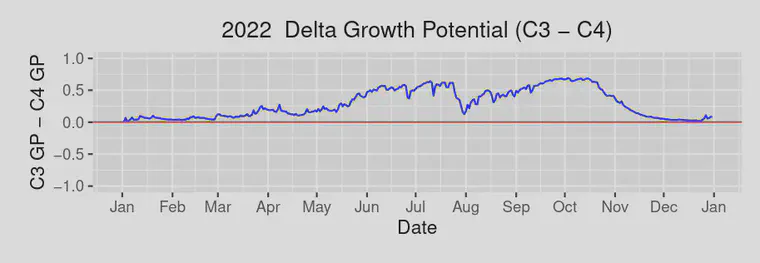Summer assessment with ΔGP
Subtracting the warm-season growth potential (GP) from the cool-season GP is an effective way to describe temperature differences for grass growth
I’ve written before about ΔGP. That’s read as “delta G P” and it is the difference in the cool-season and the warm-season growth potential. Specifically, it is the cool-season GP first, then the warm-season GP is subtracted from that. When the ΔGP is a negative value, that means the temperatures are much more suitable for warm-season grass than they are for cool season grass.
Such an index of the temperature conditions and the temperature’s influence on the relative suitability of different types of grass can be useful. I’ve used this for:
- checking the length of summer
- identifying optimum overseeding dates
- assessing the degree and duration of heat stress
- comparing summer conditions at different locations
- comparing summer conditions from year to year
An analysis at PACE Turf of summer temperatures in 2024 has the ΔGP expressed as a percentage of the 113 day period combining meteorological and astronomical summer.
Another way to look at this is to plot the ΔGP through the year.

That’s what ΔGP looked like for the Portland, Oregon area in 2022. That’s a climate where cool-season grasses dominate.

The chart above is for Hong Kong in 2023. The ΔGP was negative from May to November. That’s a climate where warm-season grasses dominate.
If one is trying to grow warm-season grass, then it’s desirable to have many days with a negative ΔGP. If one is trying to grow cool-season grass, it’s better when there aren’t many days with negative ΔGP.
Of course one can simply describe temperature on its own. Or one can show the cool-season or warm-season GP values on their own. There’s something about ΔGP that I like, perhaps because it simply says that if the value is negative, that was a really bad day (temperature-wise) for cool-season grass. Sometimes that type of assessment can be useful.
